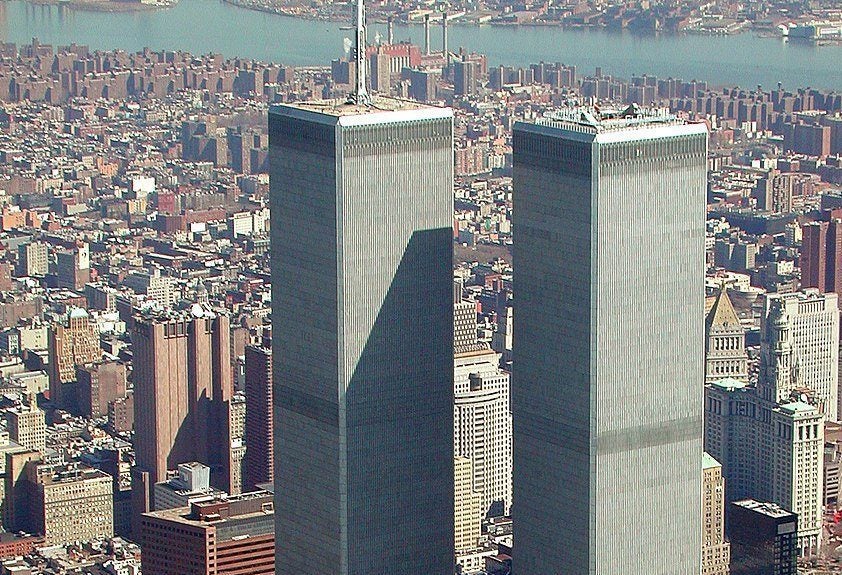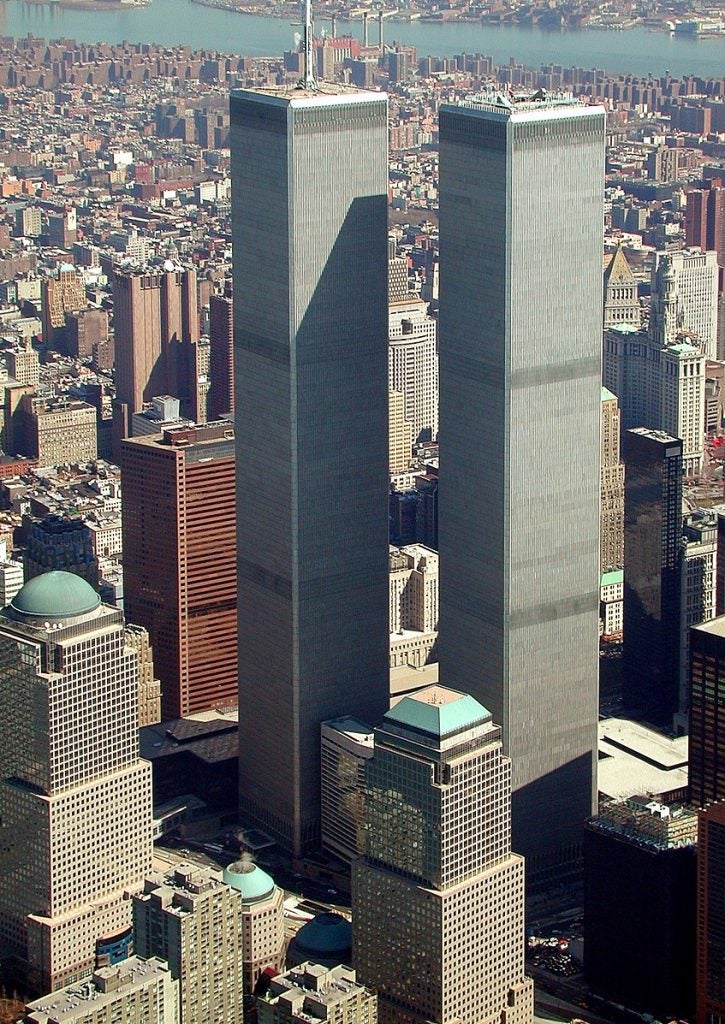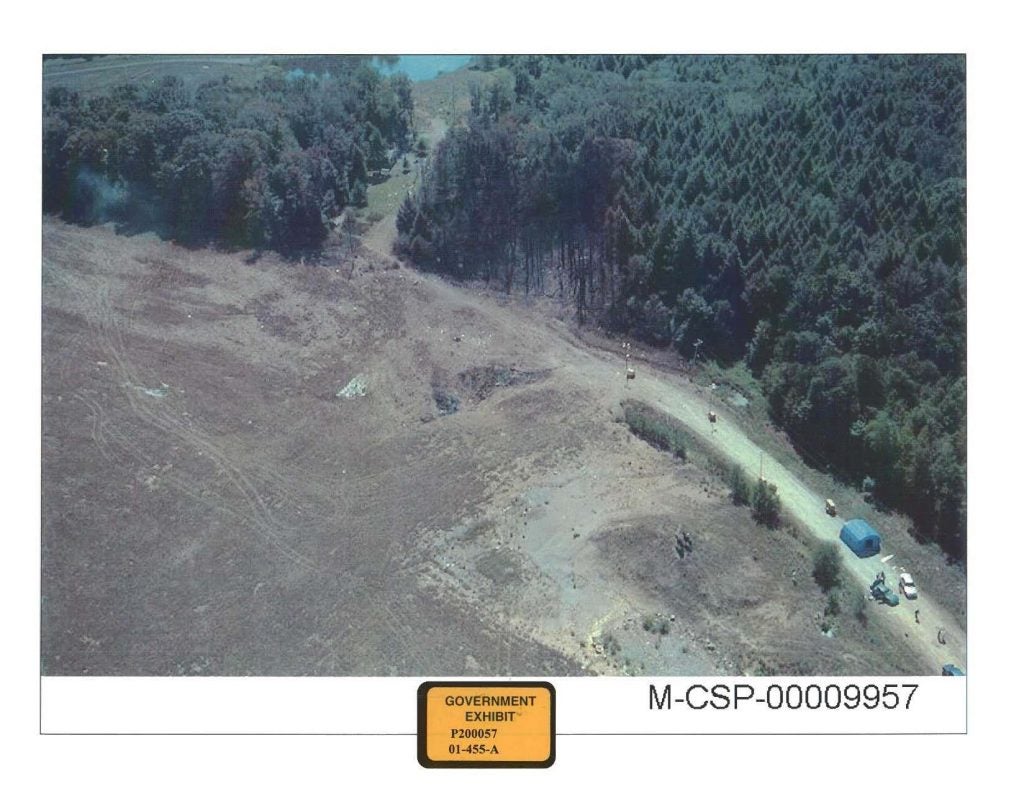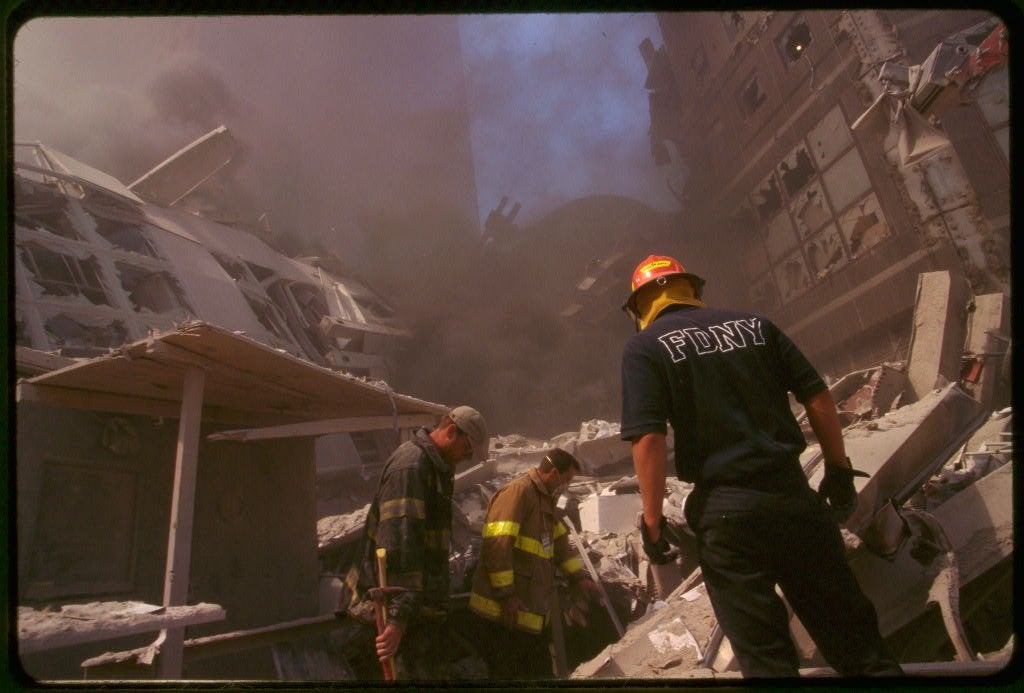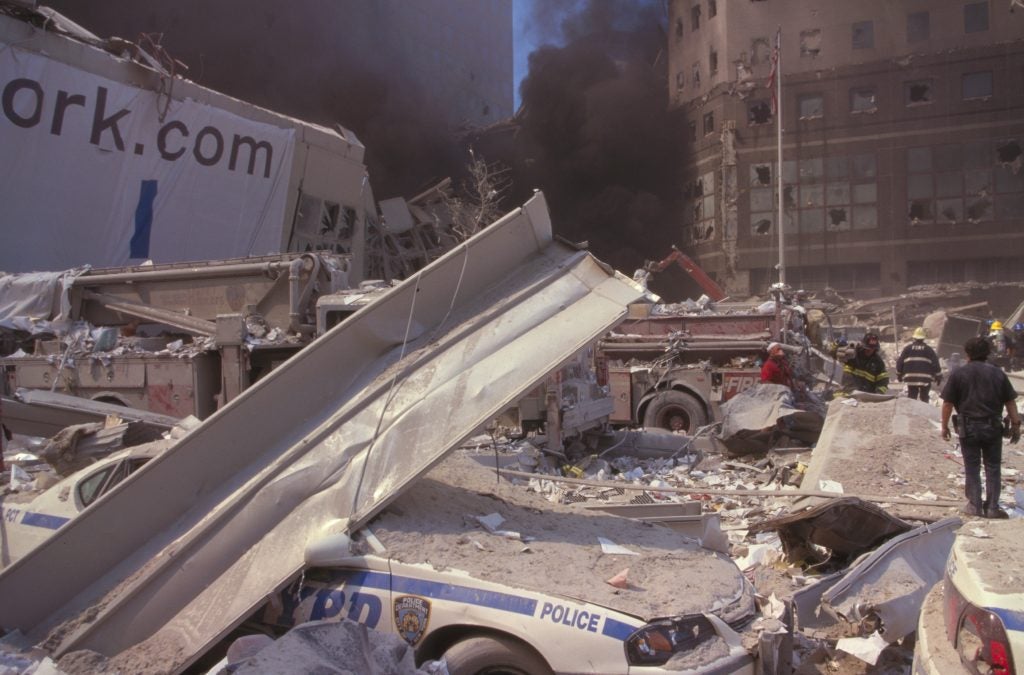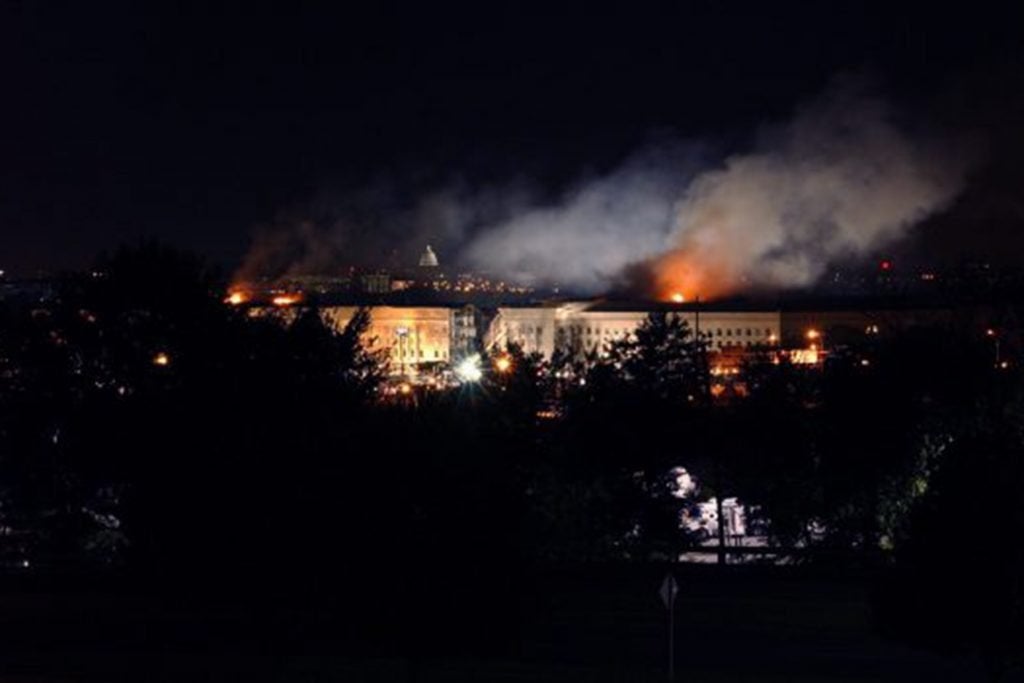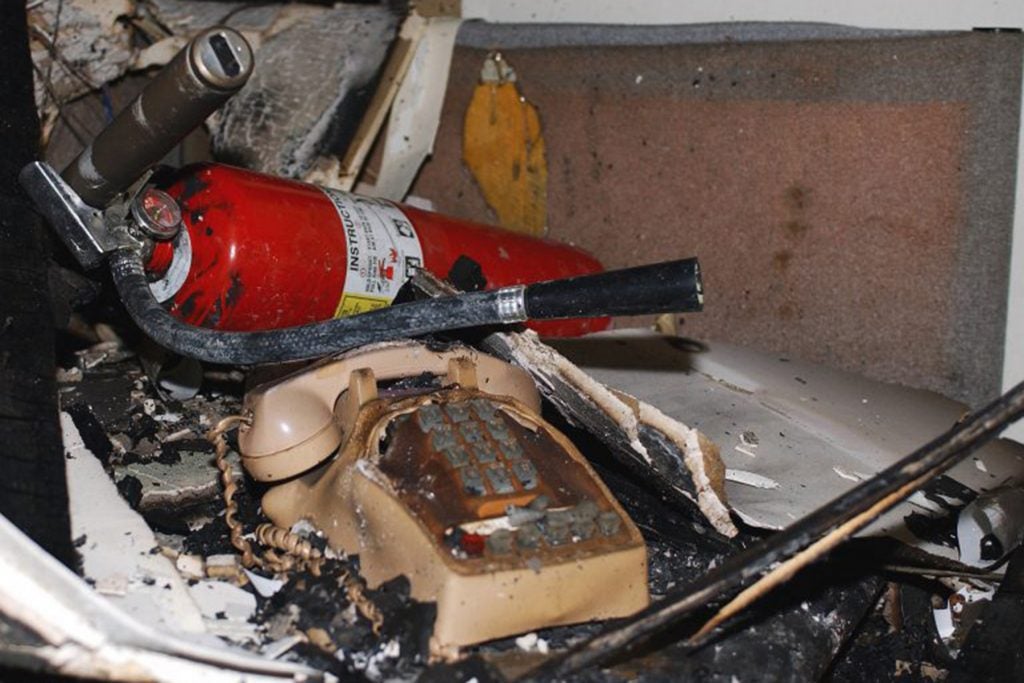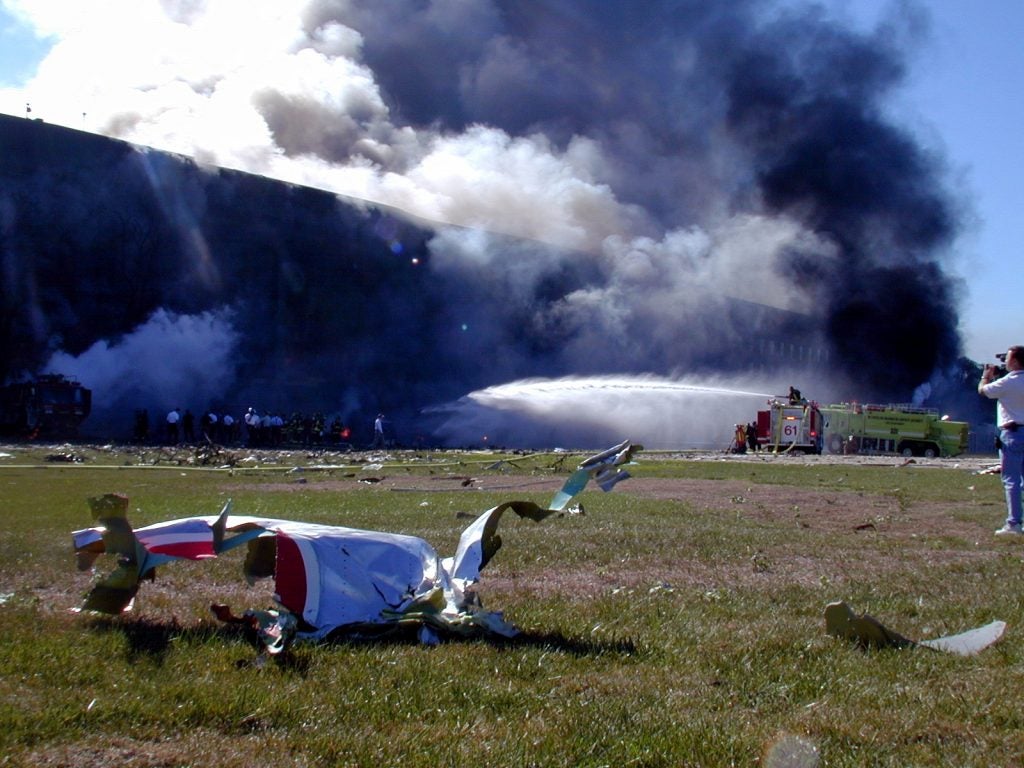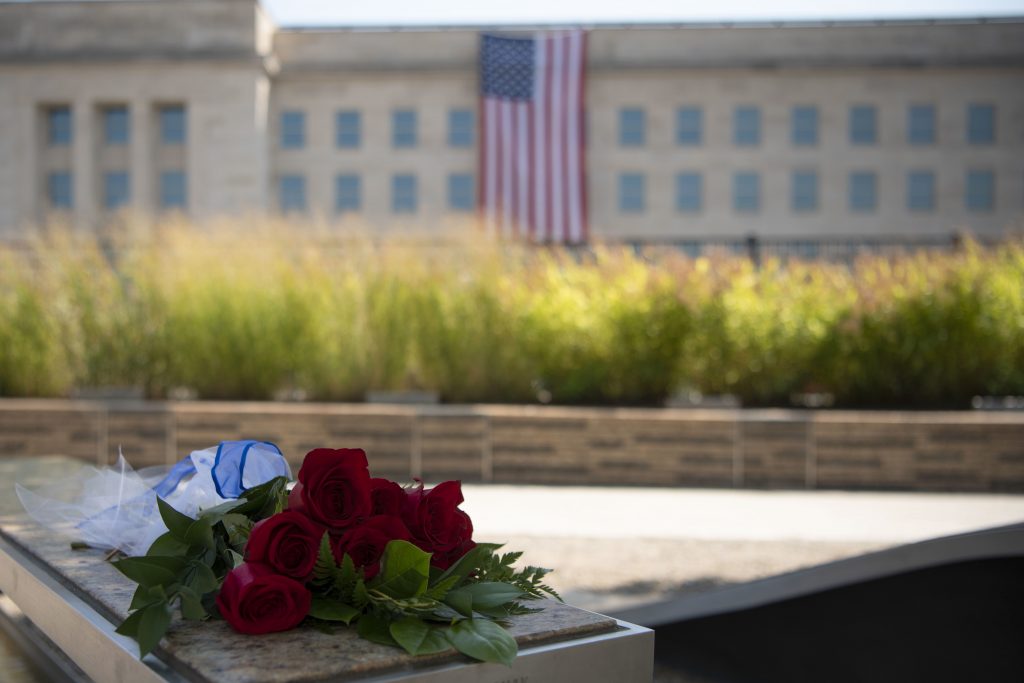- Arial view of WTC in March of 2001
- The World Trade Center burns behind New York City’s Empire State Building, Sept. 11, 2001. Both towers were attacked as a result of a highly-coordinated al-Qaida plot.
- An aerial view of the United Flight 93 crash site. Photo courtesy National Park Service.
- First responders sort through debris at the World Trade Towers. Photo courtesy Library of Congress, Prints & Photographs Division, [reproduction number, e.g., LC-USZ62-123456]
- An exhausted New York firefighter at the Twin Towers site. Photo courtesy Library of Congress, Prints & Photographs Division, [reproduction number, e.g., LC-USZ62-123456]
- Fired at the Pentagon burned through the night of Sept. 11, 2001. Photo courtesy Library of Congress, Prints & Photographs Division, [reproduction number, e.g., LC-USZ62-123456]
- Placards expressing emotions remain after memorial services held on the grounds overlooking the Pentagon as part of the September 14, National Day of Prayer and Remembrance. President George W. Bush declared the day in the wake of terrorist attacks on September 11, which resulted in extensive loss of life and damage to the Pentagon and the twin towers of the World Trade Center in New York City.
- Wreckage from the hijacked American Airlines FLT 77 sits on the west lawn of the Pentagon minutes after terrorists crashed the aircraft into southwest corner of the building. The Boeing 757 was bound for Los Angeles with 58 passengers and 6 crew. All aboard the aircraft were killed, along with 125 people in the Pentagon. U.S. Navy Photo by Journalist 1st Class Mark D. Faram. (RELEASED)
- Small American flags are left planted on the grounds overlooking the Pentagon after a memorial ceremony. President George W. Bush declared Sept. 14, 2001 a National Day of Prayer and Remembrance in the wake of suspected terrorist attacks on September 11th, which resulted in extensive loss of life and damage to the Pentagon and the twin towers of the World Trade Center in New York City.
- US President George W. Bush visits the Pentagon to survey damage and commend the joint rescue and recovery efforts currently underway the following the September 11, 2001, terrorist attack. The morning before, in an attempt to frighten the American people, five members of Al-Qaida, a terrorist group of fundamentalist Muslims, hijacked American Airlines Flight 77, then flew a circuitous route returning to Washington and impacting the Pentagon killing all 64 passengers onboard and 125 people on the ground. The impact destroyed or damaged four of the five rings in that section of the building.
- Standing on top of a crumpled fire truck with retired New York City firefighter Bob Beckwith, President George W. Bush rallies firefighters and rescue workers Friday, Sept. 14, 2001, during an impromptu speech at the site of the collapsed World Trade Center towers in New York City. “I can hear you,” President Bush said. “The rest of the world hears you. And the people who knocked these buildings down will hear all of us soon.” Photo by Eric Draper, Courtesy of the George W. Bush Presidential Library
- The National 9/11 Pentagon Memorial is seen on the anniversary of the attacks, Washington, D.C., Sept. 11, 2019. (Department of Defense photo by Lisa Ferdinando)
- The “Tribute in Light” memorial is in remembrance of the events of Sept. 11, 2001. The two towers of light are composed of two banks of high wattage spotlights that point straight up from a lot next to Ground Zero. Photo courtesy U.S. Air Force photo/Denise Gould, photographer
Many vowed after Sept. 11 never to forget. Never to forget how easy it was for four terrorist teams to hijack jets and fly them into landmarks, killing thousands of Americans. Never to forget the sacrifices of those died that day as they helped others to safety. Never to forget our unity of spirit or purpose. But many commentators these days are pointing out just how poorly we have remembered. Have remained vigilant in their resolve. The purpose of this photo essay is to jog memories, to bring the events of those days back into focus so that, perhaps, Americans can find that unit and that resolve again.
Debbie Reddin van Tuyll is a writer for The Augusta Press. Reach her at debbie@theaugustapress.com.
[adrotate banner=”15″]

